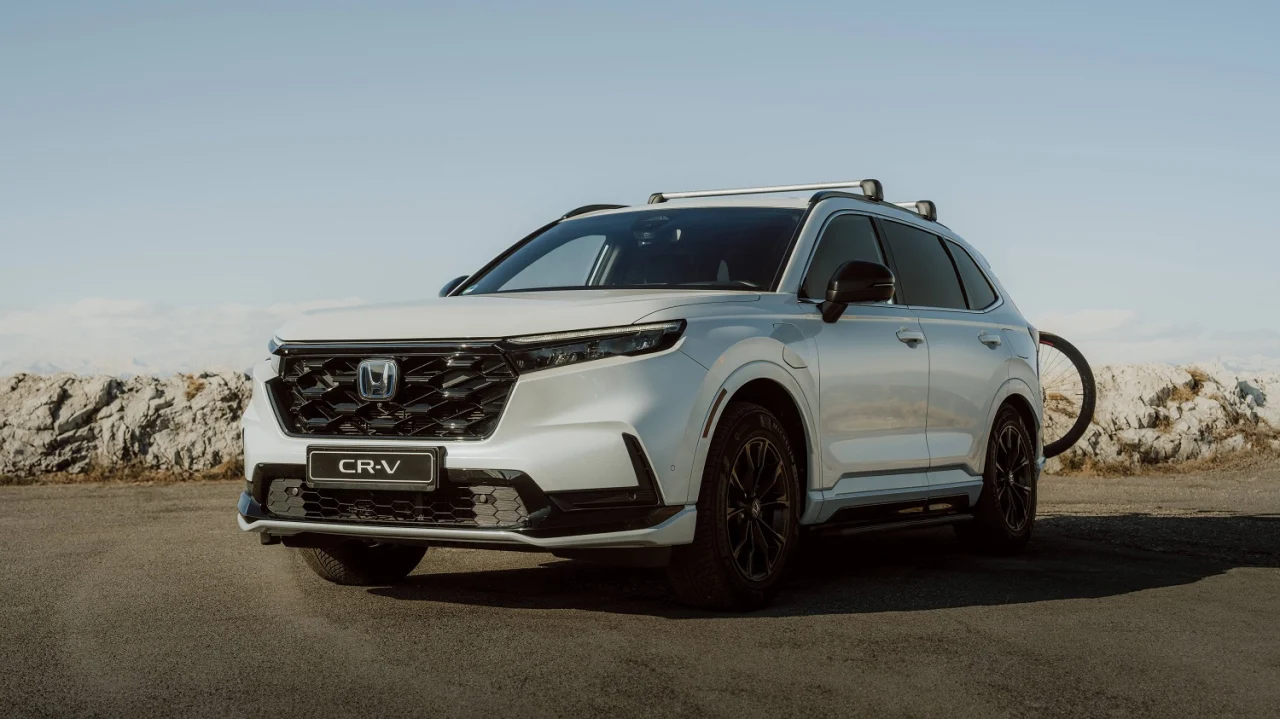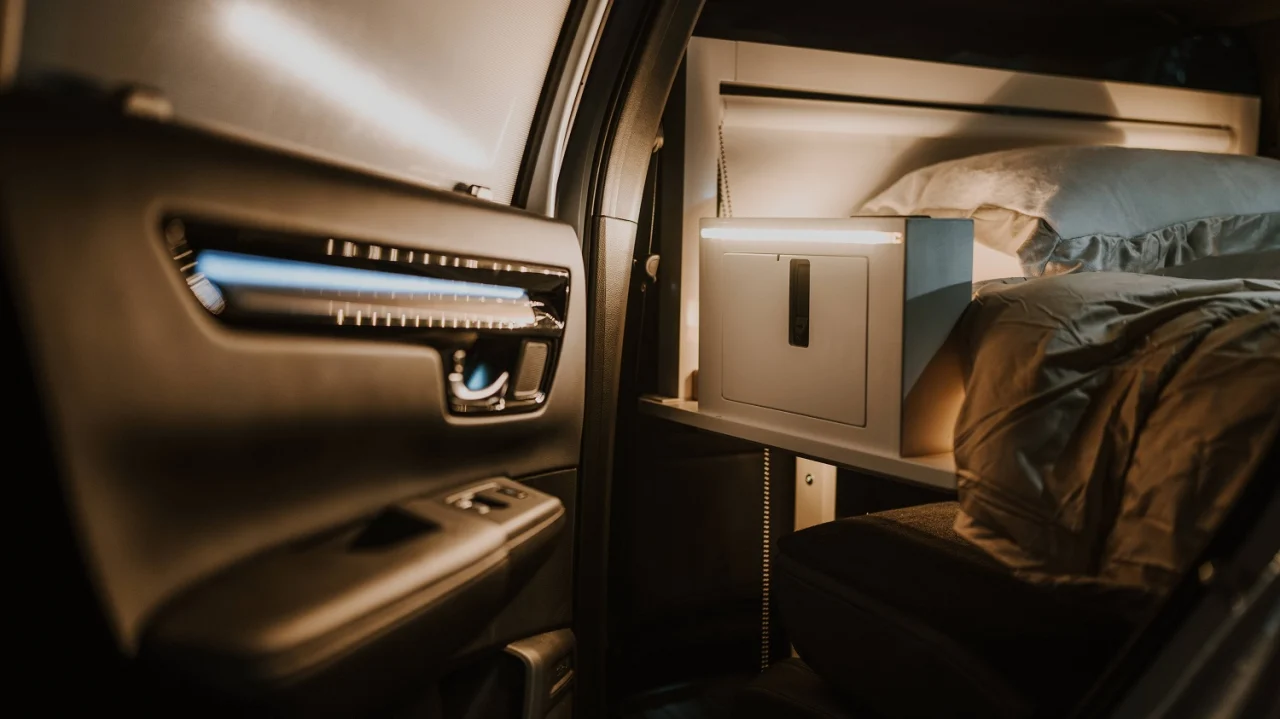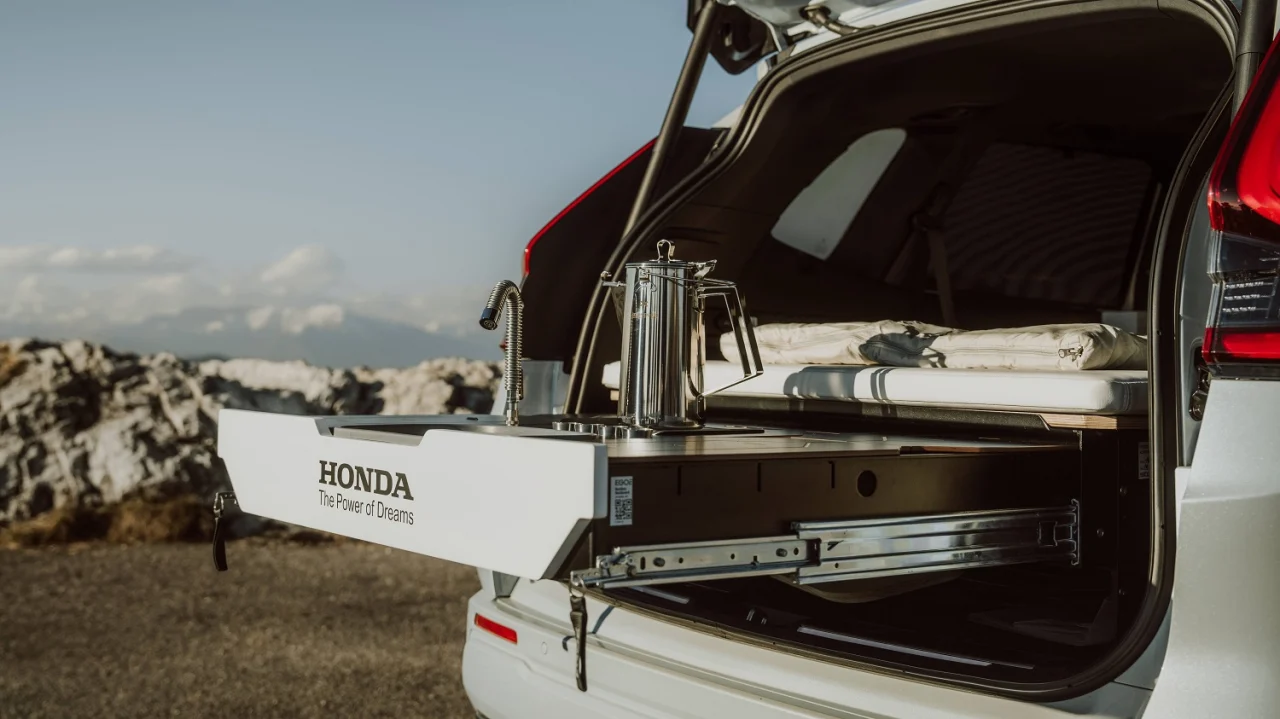How old is the Honda CR-V? It depends on who you ask. It was officially introduced in 1995, but it didn’t reach the U.S. market until the 1997 model year. To mark 30, Honda Motor Europe came up with the CR-V “Dream Pod” Concept.

The Dream Pod was inspired by Japanese capsule hotels, which provide basic lodging at a price that’s lower than the cost of a regular hotel room. As the base for this bed-away-from-bed, Honda chose a CR-V e:PHEV, its first plug-in hybrid for the European market, which offers up to 49 miles of all-electric range.

The build team then converted the second row and rear cargo area into sleeping quarters. Egoe’s Nestboard 650 can accommodate two adults on its folding double mattress.

After a long day of exploring the outdoors, occupants can wind down in the “tech pods,” which have LED reading lights, pull-out side tables, and even USB charging ports. When it’s time for bed, the retractable blind behind the front seats and black-out shades for the rear windows can be closed to create even better sleeping conditions.

There’s more to the Dream Pod than that, though. The base of the Nestboard 650 contains a drawer that slides out to provide access to a stove, collapsible sink, and storage space for utensils, cutlery, and plates (no word on if there’s a dedicated spot for s’mores ingredients).

Given the CR-V’s official first year on the market, it makes sense that Honda chose one of its European models as the foundation for this custom build. Certainly there’s an appetite for this kind of gear here in the United States. Perhaps in 2027 Honda will commemorate the CR-V’s 30th anniversary in the U.S. with a similar build or by announcing it’s adding car camping/overlanding equipment to the list of available accessories. At the rate Honda’s been going with its more rugged models, maybe it’ll roll out a CR-V TrailSport. In the meantime, we’ll just have to wait to see if any of the Dream Pod’s equipment or—at the very least—essence becomes a reality.

